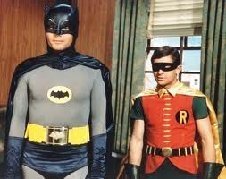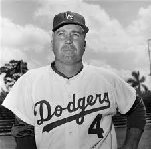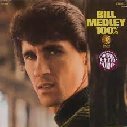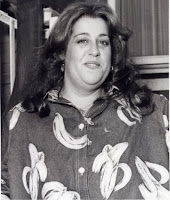
Police vehicles in the United States and Canada are produced by several manufacturers and are available in three broad vehicle types: Police Pursuit Vehicle (PPV), Special Service Vehicle (SSV), and Special Service Package (SSP).
Police Pursuit Vehicles are the most common police cars. They are equipped to handle the vast majority of tasks, including pursuit and high-speed response calls. Special service vehicles and special service packages are specialized vehicles, such as sport-utility vehicles and sports cars. They are generally heavier-duty and may come with specialized option packages for specific tasks but are typically not recommended by the manufacturer for use as pursuit vehicles.
The first police car was a wagon run by electricity on the streets of Akron, Ohio in 1899. Since the 1920s, the New York City Police Department has employed a fleet of Radio Motor Patrol vehicles to aid in its fight against crime within the city.
Ford's introduction of the flathead V-8 in its Model 18 in 1932––the first low-priced, mass-marketed car with a V8 engine––proved popular amongst police departments and led to strong brand loyalty. In turn, this gave the company a market-capturing edge that lasted until 1968. In the 1940s and 1950s, the "Big Three" (Ford, General Motors, and Chrysler) began to offer specialized police packages with severe duty parts. Foremost amongst these was the Ford package of 1950, which utilized the larger and more powerful Mercury engine in the smaller, lighter Ford. This ended the practice of some state police buying larger and more powerful, but higher-priced models including Buicks, Hudsons, and Chryslers. In 1969, Plymouth took first place in the police market, with Chrysler's 440 cu. in. V8s, Torqueflite transmissions, and torsion bar suspensions giving them a compelling advantage. Chrysler held this lead until the 1970s energy crisis drove buyers to smaller cars, and Chrysler subsequently discontinued their rear-drive platform after the 1989 model year.
In the United States and Canada, police departments have historically used standard-size, low-price line sedans since the days of the Ford Model A, although many police departments switched to intermediates––such as the Plymouth Satellite, Ford Torino, and AMC Matador––in the 1960s and 1970s. Some state highway patrols (including those of California and Missouri) adopted pony cars, such as the Ford Mustang, Chevrolet Camaro, and AMC Javelin for use as high-speed pursuit vehicles. The Ford LTD, Plymouth Gran Fury, and Chevrolet Caprice were re-adopted as standard when the models were downsized in the late 1970s.
Since the termination of the North American Chevrolet Caprice model in 1996 (though it would subsequently return in 2010 for exclusive law enforcement use), the Ford Crown Victoria Police Interceptor replaced it as the standard patrol car, however, most Ford Crown Victorias have now been phased out. In an attempt to better combat the threat of rear-end impacts that highway patrol vehicles face when stopped on the shoulder, new models can be optionally equipped with a fire suppression system. Other models such as the Chevrolet Impala (8th and 9th generations), Chevrolet Tahoe and Dodge Charger also gained a percentage of the market. In September 2011, however, Ford discontinued the Crown Victoria in favor of the 6th-generation Taurus. This has helped Dodge reclaim leadership in the market with the Dodge Charger Pursuit, as of 2012.
Non-Crown Victoria police vehicles may be bought to diversify a police department's fleet in order to better minimize disruption should a recall occur.
Despite some (primarily Canadian) jurisdictions electing to use front-wheel-drive sedans with smaller engines––mainly the Chevrolet Impala, the current iteration of which being a V6––the rear-wheel-drive V8 configuration is still widely preferred, due in part to its consistency with pursuit driver training, as well as generally greater reliability. Furthermore, trials with FWD vehicles such as the Taurus and Impala have proven problematic in terms of maintenance costs. In 1994, for example, a Ford spokeswoman noted that "It is certainly true that any front-wheel-drive car would be more expensive and difficult to maintain if you subjected it to the kind of hard use they get in police departments."
North American police cars were once noted for being painted black and white, But not just limited to black and white vehicles, with the car doors and roof painted white, while the trunk, hood, front fenders and rear quarter panels were painted black. The fleet vehicles that were used typically came painted in a single color, most commonly white or black, from the factory and were used as such. The contrasting black or white color was added to make the vehicle stand out from civilian vehicles. In 2007, the Ontario Provincial Police (OPP) began converting its fleet back to a black-and-white scheme after decades of using other colors and varieties of paint jobs. The U.S. Department of Homeland Security recommends, but does not require, that local law enforcement agencies employ a uniform black and white vehicle color scheme for ease of visual identification nationwide.
Beginning in the 1970s, police vehicle markings have become increasingly stylistic, with the widespread use of computer-graphics and vinyl striping. While black and white designs are still in use in many jurisdictions, cars may range from being all white to completely black. Blues and greens of various hues are also frequently used. Brown, beiges, and tans are favored by rural police and sheriff's offices.
California
- Arcadia has a "mini-fleet" of Dodge Chargers.
- The Azusa Police Department owned the first Chevrolet Camaro police car ever built (1985–1999?).
- Beverly Hills has a Mercedes ML350 which is used by the School Resource Officers in their assignments at the Beverly Hills schools. It is the second Mercedes to have been loaned to the Department by Mercedes-Benz of Beverly Hills. They also have at least one undercover Chrysler 300.
- The Colton and Chino Police Departments each had a Chevrolet Corvette in their fleets.
- Fremont police are the first to use a Tesla Model S as a patrol car.
- The Irwindale Police Department currently has five Dodge Chargers (Police Package version) and had originally planned to become the first all-Charger police force in Los Angeles County.
- The Los Angeles Police Department uses the Chevrolet Colorado, GMC Yukon, Ford Edge, Dodge Caravan, Toyota Tacoma, Honda CR-V, for Unmarked Vehicles.[31] Other kinds of vehicles that the LAPD use as unmarked vehicles are Dodge Charger, Pontiac Grand Prix, Chevrolet Malibu, Chevrolet Impala, Buick Century, Dodge Intrepid, Toyota Camry, Ford Taurus, Chevrolet Monte Carlo, GMC Acadia, Chrysler Sebring, Ford Expedition, Chevrolet Tahoe, Chevrolet Suburban, Dodge Stratus, Chevrolet Lumina, Toyota RAV-4, Toyota Highlander, Chevrolet TrailBlazer, Buick LaCrosse, Dodge Durango, Chevrolet Equinox, Ford C-Max, Mercury Milan, Mercury Montego, Chevrolet Uplander, Dodge Ram, Honda Accord, Nissan Altima, Nissan Maxima, Nissan Quest, Ford Fusion, Ford Five Hundred, Dodge Avenger, Chrysler 200, Chrysler Town And Country, Buick Regal (1997-2004), GMC Terrain, Chevrolet Traverse, Mazda 6, Mazda 3, Volkswagen Jetta, Toyota Avalon, Toyota Corolla, Dodge Journey, Jeep Grand Cherokee, Jeep Liberty, Toyota Matrix, Jeep Cherokee, Ford Escape, Honda Pilot, Toyota Sienna, Honda Odyssey, Toyota 4Runner, Pontiac G6, Toyota Camry Solara, Mazda 626, Plymouth Breeze, Ford Mustang, and other kinds of vehicles.
- The Los Angeles Sheriff Department issues unmarked Dodge Chargers, Crown Victorias, Ford Tauruses, Ford Explorers to some officers, however, they also issue other kinds of vehicles that are more normal looking like the Chevrolet Impala, Chevrolet Traverse, Chevrolet Equinox, Buick Century, GMC Sierra, Ford Taurus (2000-2007), Ford Escape, Ford Edge, Ford Explorer: Civilian Version, Ford Expedition, Ford F-150, Ford Windstar/Freestar, Dodge Journey, Dodge Durango, Nissan Altima, Nissan Pathfinder, and other kinds of vehicles.
- The Manteca Police Department utilizes several different types of marked vehicles in their fleet. Some of these include the Ford Crown Victoria Police Interceptor, Dodge Charger, Chevrolet Tahoe, Ford Escape, Ford Taurus, Jeep Cherokee, Dodge Ram Rumble Bee and the Toyota Tacoma.
- The Santa Clara County Sheriff's Office has several unmarked Toyota Camrys, primarily for use by the auto-theft unit.
- The San Ramon Police possess one Dodge Magnum and at least two Dodge Chargers.
- The Riverside County Sheriff's Department has at least two Dodge Magnums
Corn and Broccoli Casserole is a hearty side dish that starts with fresh tasting frozen veggies and ends with a hot, out of the oven homey result that'll pair with any main dish.
- 1 (20-ounce) package frozen creamed corn, slightly thawed
- 1 (16-ounce) package frozen chopped broccoli, thawed
- 1 egg
- 1/4 cup (1/2 stick) butter, melted, divided
- 1/2 teaspoon onion powder
- 1/2 teaspoon salt
- 1/4 teaspoon black pepper
- 1 cup coarsely crushed butter crackers
- Preheat oven to 350º. Coat an 8- x 8-inch baking dish with cooking spray.
- In a large bowl, combine corn, broccoli, egg, 2 tablespoons melted butter, the onion powder, salt, and pepper; mix well and spoon into baking dish.
- In a small bowl, mix crackers and remaining melted butter; sprinkle on top.
- Bake 40 to 45 minutes, or until firm in center.




1940 – Bill Medley, American singer and songwriter (The Righteous Brothers)


1941 – "Mama" Cass Elliot, American musician (d. 1974)
Talk Like a Pirate Day sails away annually on September 19th.
All you bilge rats, Aaaaaaaaaaaaarrrrrrrrrrrrgh! As you are out and about on September 19th, don’t be surprised if people are saying, “Ahoy Matie,” “Avast,” “Aye, Aye Capt’n,” “Land ho!” “Hornpipe,” and many other pirate-like phrases, because it’s International Talk Like a Pirate Day.
While ordering your coffee in the drive-thru, ask if they have change for gold bullion. Try testing your pirate language out at the library when asking for the location of Moby Dick. The pirate language always fairs well in rough seas. Settle a debate with “I’m right or I’ll walk the plank!”
When the boss gives you a new project, “Aye, aye, Capt’n,” is the correct response. However, beware calling the boss any frothy names. The goal of the day is not to lose your job.
To polish your persona, practice a swagger, limp or squint. Long days at sea give pirates unique qualities.
HOW TO OBSERVE TALK LIKE A PIRATE DAY
Anchor’s away! Get your sea legs and a barrel o’ rum. Feel free to join in anytime with your own version of Pirate-ese.
John Baur and Mark Summers (aka Ol’ Chumbucket and Cap’n Slappy) created this international day in 1995. Click here for the entire story!
Q. What should my pirate name be?
A. Here’s a great way to create your pirate name:
- Pick a color.
- Choose an animal.
- Name a profession.
- Put steps 1, 2, and 3 together to create your name.
For example: blue + clam + dancer = Blue Clam Dancer.


















